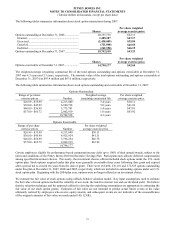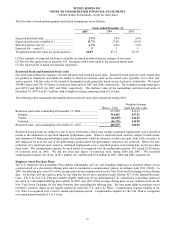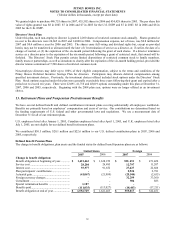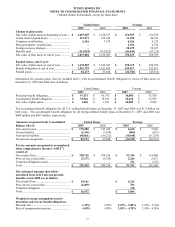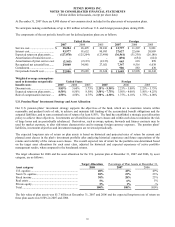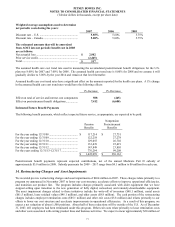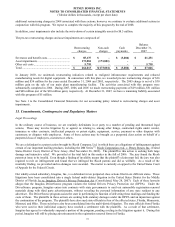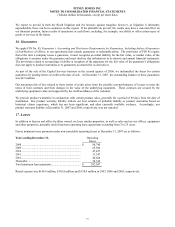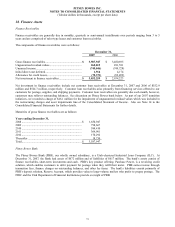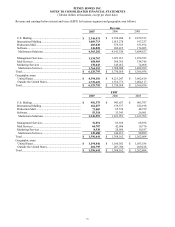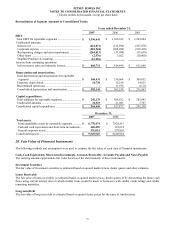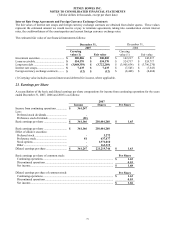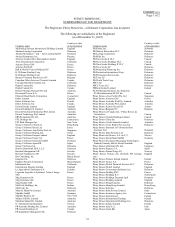Pitney Bowes 2007 Annual Report Download - page 92
Download and view the complete annual report
Please find page 92 of the 2007 Pitney Bowes annual report below. You can navigate through the pages in the report by either clicking on the pages listed below, or by using the keyword search tool below to find specific information within the annual report.
PITNEY BOWES INC.
NOTES TO CONSOLIDATED FINANCIAL STATEMENTS
(Tabular dollars in thousands, except per share data)
74
18. Finance Assets
Finance Receivables
Finance receivables are generally due in monthly, quarterly or semi-annual installments over periods ranging from 3 to 5
years and are comprised of sales-type leases and customer loan receivables.
The components of finance receivables were as follows:
December 31,
2007
2006
Gross finance receivables .................................................. $ 3,587,947
$ 3,480,695
Unguaranteed residual values............................................ 260,815
281,581
Unearned income............................................................... (740,046) (749,728)
Initial direct cost deferred.................................................. 1,914
4,174
Allowance for credit losses................................................ (78,371) (82,499)
Net investment in finance receivables ............................... $ 3,032,259
$ 2,934,223
Net investment in finance receivables include net customer loan receivables at December 31, 2007 and 2006 of $552.9
million and $524.7 million, respectively. Customer loan receivables arise primarily from financing services offered to our
customers for postage, supplies, and shipping payments. Customer loan receivables are generally due each month, however,
customers may rollover outstanding balances. See discussion on Pitney Bowes bank below. As part of our 2007 transition
initiatives, we recorded a charge of $46.1 million for the impairment of unguaranteed residual values which was included in
the restructuring charges and asset impairments line of the Consolidated Statement of Income. Also see Note 14 to the
Consolidated Financial Statements for further details.
Maturities of gross finance receivables are as follows:
Years ending December 31,
2008................................................................................... $ 1,650,947
2009................................................................................... 798,667
2010................................................................................... 584,410
2011................................................................................... 364,901
2012................................................................................... 170,292
Thereafter .......................................................................... 18,730
Total................................................................................... $ 3,587,947
Pitney Bowes Bank
The Pitney Bowes Bank (PBB), our wholly owned subsidiary, is a Utah-chartered Industrial Loan Company (ILC). At
December 31, 2007, the Bank had assets of $672 million and of liabilities of $617 million. The bank’ s assets consist of
finance receivables, short-term investments and cash. PBB’ s key product offering, Purchase Power, is a revolving credit
solution, which enables customers to defer payment for postage when they refill their meter. PBB earns revenue through
transaction fees, finance charges on outstanding balances, and other fee items. The bank’ s liabilities consist primarily of
PBB’ s deposit solution, Reserve Account, which provides value to large-volume mailers who prefer to prepay postage. The
FDIC and the Utah Department of Financial Institutions provide oversight of PBB.


